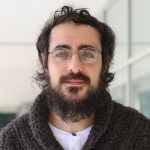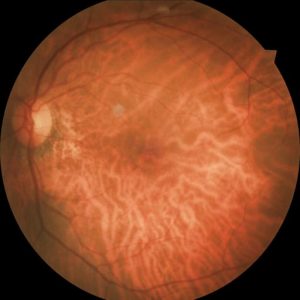 My name is Adrian Galdran, and I was appointed as a Senior Lecturer in Data Science for Medical Imaging last November, in the context of BU’s Academic Targeted Research Scheme. Although I am particularly interested in medical image analysis, I have a broad interest in medical data taking any shape and nature, be it text, imaging, video, or even big tables filled with numbers!
My name is Adrian Galdran, and I was appointed as a Senior Lecturer in Data Science for Medical Imaging last November, in the context of BU’s Academic Targeted Research Scheme. Although I am particularly interested in medical image analysis, I have a broad interest in medical data taking any shape and nature, be it text, imaging, video, or even big tables filled with numbers!
I have been working on computer vision with medical applications for a while now. After earning my PhD in the Basque Country University (northern Spain), I headed to the beautiful Porto, where I spent two years as a postdoctoral fellow at INESC-TEC. In those years I focused a lot on the automatic analysis of images of the eye fundus. These are images acquired by projecting light into the back of the eye and capturing a picture of the retina, and they are useful for the early detection of diseases like Diabetic Retinopathy or Age-Related Diabetic Maculopathy.

An image of the eye fundus – the retina
When a person suffers from this kind of diabetes, retinal vessels start to hemorrhage and leak blood into the retina, which at first starts as micro-aneurysms, but later develops into larger lesions and leads to sight-threatening situations. I find it fascinating that we can diagnose diseases like diabetes by looking into the human retina.
After my stay in Portugal, I moved for a second postdoctoral experience to Montréal, Canada, where I worked on deep learning for medical image classification and segmentation, again with a focus on retinal imaging. I spent one year in Canada, with its rough winter and a wonderful summer. It was then that I received the offer to pursue my research within BU, in the context of the new Medical Imaging and Visualisation Institute (IMIV). I am very excited to collaborate with this new institution, which houses an MRI scanner and ultrasound devices. I expect that the privilege of having access to these advanced facilities will trigger research in medical image analysis at BU, and I am hoping to be part of it.
If you are interested in collaborating in any aspect of medical image analysis, please contact me to discuss any common project we may build.












 New Nepal scoping review on maternal & neonatal health
New Nepal scoping review on maternal & neonatal health Fourth INRC Symposium: From Clinical Applications to Neuro-Inspired Computation
Fourth INRC Symposium: From Clinical Applications to Neuro-Inspired Computation Writing policy briefs
Writing policy briefs Upholding Excellence: The Concordat to Support Research Integrity
Upholding Excellence: The Concordat to Support Research Integrity ECR Funding Open Call: Research Culture & Community Grant – Application Deadline Friday 12 December
ECR Funding Open Call: Research Culture & Community Grant – Application Deadline Friday 12 December MSCA Postdoctoral Fellowships 2025 Call
MSCA Postdoctoral Fellowships 2025 Call ERC Advanced Grant 2025 Webinar
ERC Advanced Grant 2025 Webinar Horizon Europe Work Programme 2025 Published
Horizon Europe Work Programme 2025 Published Horizon Europe 2025 Work Programme pre-Published
Horizon Europe 2025 Work Programme pre-Published Update on UKRO services
Update on UKRO services European research project exploring use of ‘virtual twins’ to better manage metabolic associated fatty liver disease
European research project exploring use of ‘virtual twins’ to better manage metabolic associated fatty liver disease